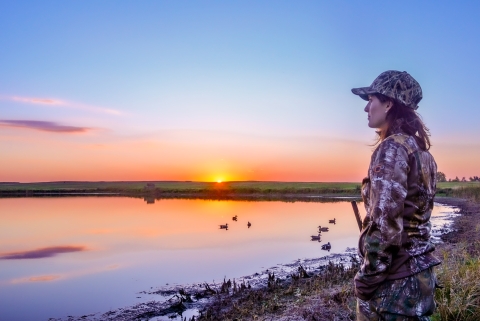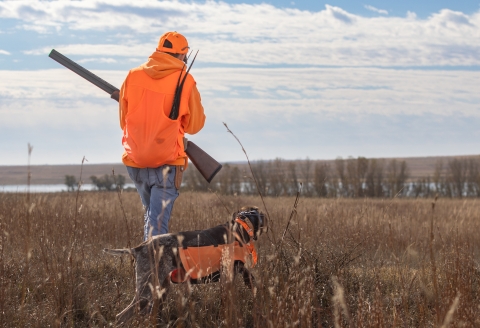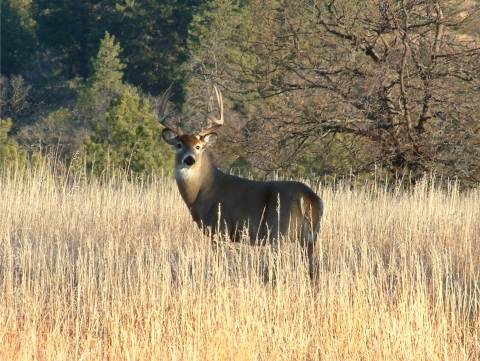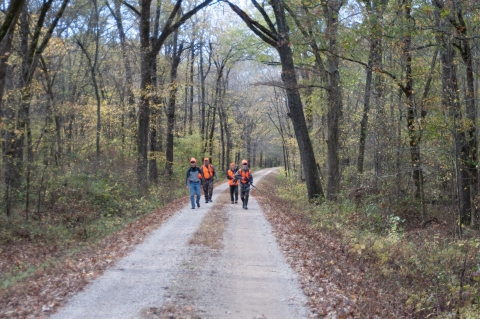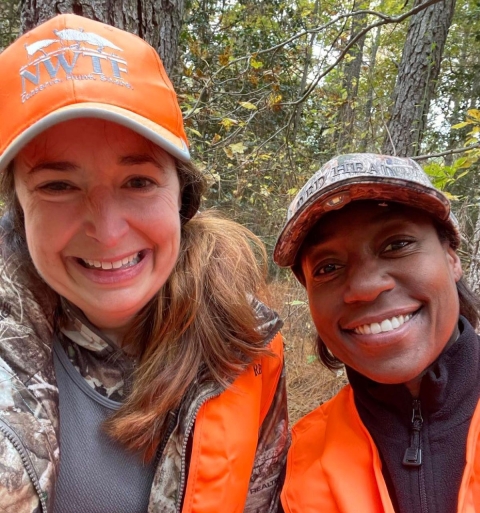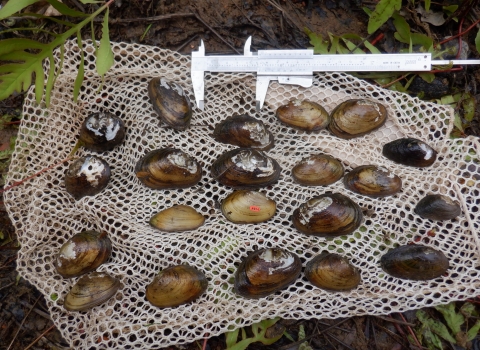Every fall, Parker River NWR hosts an annual two-day deer hunt. This hunt plays an important role in managing wildlife by reducing over-crowding and over-browsing. However, the role of hunting in conservation can be confusing to many. This blog provides an overview of hunting as a conservation tool both at the refuge and at public lands across the country.
Hunting as foundational to the Refuge System
Parker River is a unit within the U.S. Fish & Wildlife Service (USFWS), which upholds six identified priority public uses: hunting, fishing, wildlife observation, wildlife photography, environmental education and environmental interpretation. These activities are priorities on every refuge, if found compatible with the refuge’s statutory purposes. Parker River was established in 1942 due to all the suitable nesting, feeding, and breeding migratory bird habitat, particularly for waterfowl game species. Funds to purchase the original refuge lands originated entirely from Duck Stamp money, revenue generated from waterfowl hunting permits. Funds from federal hunt permits, tags, and stamps continue to support the purchase and conservation of lands and waters today. Since 1934, over $1.1 billion dollars have been raised from sales of Federal Duck Stamps conserving over 6 million acres of land within the refuge system.
Hunting as a means to manage wildlife
Land management agencies including USFWS, the National Park Service, and Mass Wildlife, utilize hunting as a tool to meet wildlife conservation goals. Biologists help determine hunting regulations and limits through closely monitoring wildlife populations and their habitats. Certain negative conditions may indicate hunting would be a useful means of wildlife management. For instance, research shows that booms in deer populations increase their susceptibility to illness as more individuals are coming in contact with each other more often, easily spreading disease and parasites. Herd sizes that exceed the capacity of their habitat also contribute to over browsing (eating more food than is available). This translates into negative health outcomes from starvation, and can create habitat loss for other wildlife who rely on the same habitat. Historically, large predators like wolves and mountain lions helped maintain equilibrium. In the absence of these large predators today, hunting provides an effective and low-impact tool to sustain the health of the herd.
A managed deer hunt is allowed at Parker River because the population lacks a natural predator. While there has always been a steady population of coyotes on the refuge, they are unable to regulate the deer population on their own, and mostly feed on sick and wounded deer. In the 1980’s, Parker River experienced the effects of too many deer. The population boomed on the island, causing over browsing and a decline in overall herd health. Thus, the annual deer hunt was put into effect. In the beginning, hunters were obtaining 50-60 deer throughout the two days and significantly helped manage these populations. Today, thanks to the effectiveness of population management through hunting over the years, only 2-4 deer are obtained.
While the annual deer hunt has successfully helped improve herd health on the island, it remains an important tool to ensure another population boom does not occur. Many people are surprised to hear there is a significant population of deer on the refuge, especially frequent visitors who have never or rarely spotted one on site. This is because deer behave differently on the refuge compared to those found in the surrounding suburban or semi-rural areas. Off the refuge, deer are typically seen in agricultural fields and along roadsides because of the abundance of food. Here on the refuge, there is not much food for them in the open areas where the public has access. As a result, they are often grazing in the maritime forest or sand dunes which are not open for public use. Human activity at the refuge also pushes them away from the road and boardwalks throughout the day, and into areas with denser vegetation that provides easy cover. Finally, deer are crepuscular, meaning they are most active at dusk and dawn. The refuge is open to the public from sunrise to sunset, so peak deer activity hours fall outside our public access times. If you're lucky, you might spot a deer venturing into fields just after sunrise or before sunset.
Hunting as a way of life
Hunting also represents an historical land use that has taken place as long as humans relied on Plum Island for subsistence. Many hunters describe a deep connection to the land and reverence for wildlife. Ethical hunters invest significant time learning to read the woods and understand wildlife behavior, and actively participate in ongoing conservation efforts. Although the hope of every hunter is to harvest a deer, many are happy just to experience the refuge “behind the scenes.” Parker River provides a unique system made of distinct habitats that are diminishing in the developing world. Participating in the hunt is often described as a once in a lifetime opportunity for the everyday hunter. Finally, hunting provides many families a health, affordable, and sustainable way to feed themselves. Mass Wildlife reports harvested venison provides more than 1.8 million family meals to hunters across the state every year. Their Hunters Share the Harvest Program also provides an opportunity for hunters to donate wild game meat to Massachusetts residents in need. Last year, hunters donated more than 1,500 meals.
Interested in hunting but unsure where to start
Hunter safety is required to obtain a hunt license, and free courses are offered by Mass Wildlife alongside other free learn to hunt programs. Youth, novice, and mobility impaired hunters are eligible to enter to priority category for all refuge hunts which allows them to bring a non-hunting companion to provide support. The refuge also hosts an annual mentored youth waterfowl hunt in partnership with the Essex County League of Sportsmen, as well as a new mentored women's waterfowl hunt in partnership with the New Hampshire chapter of Artemis and the Mass Wildlife Becoming an Outdoors Women's program. Additional mentored opportunities for youth and women can be found on the Mass Wildlife website. Finally, online programs like the 'Hunt for Good' initiative provide resources for building community and becoming a safe and ethical hunter.

